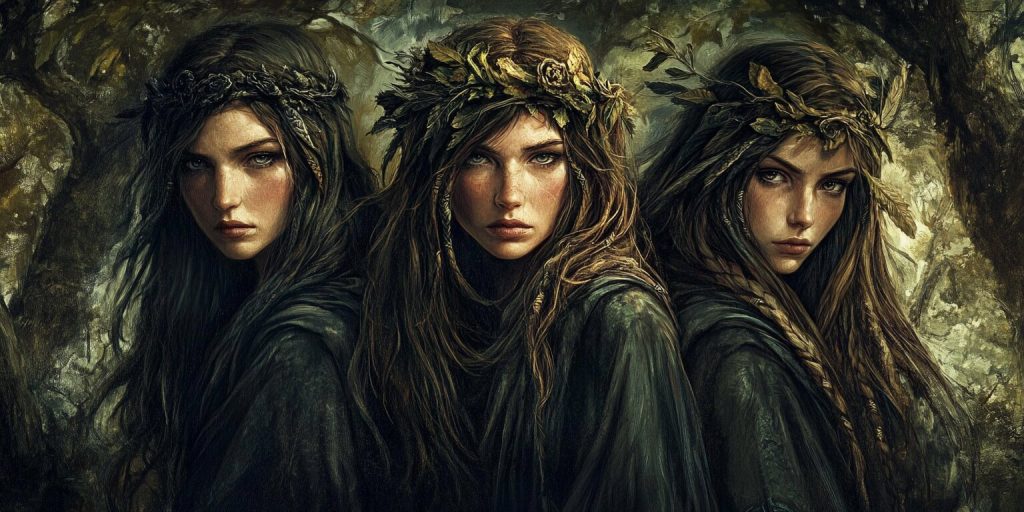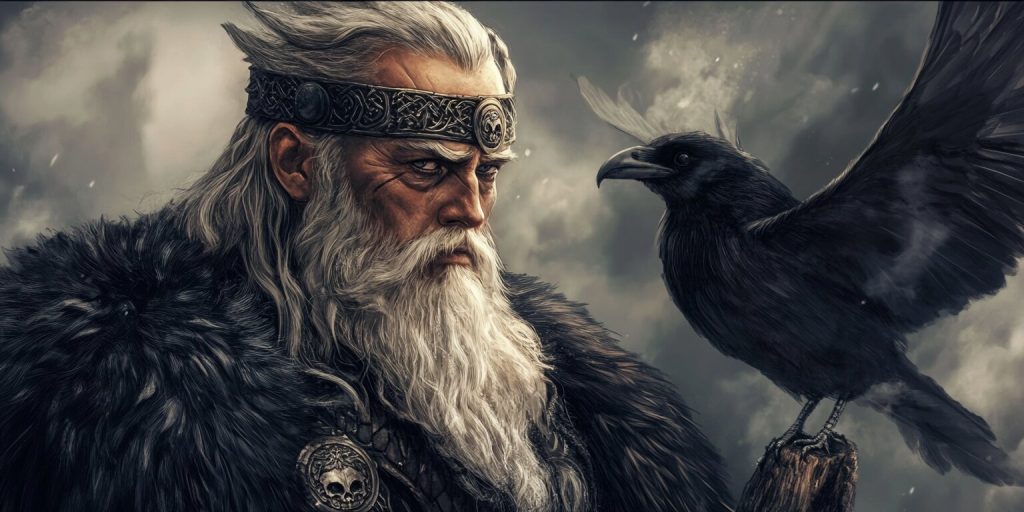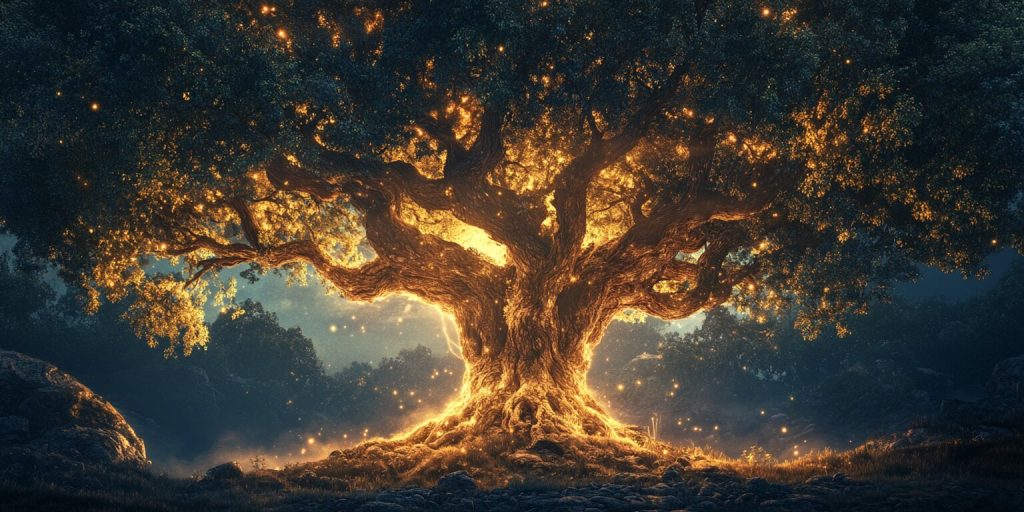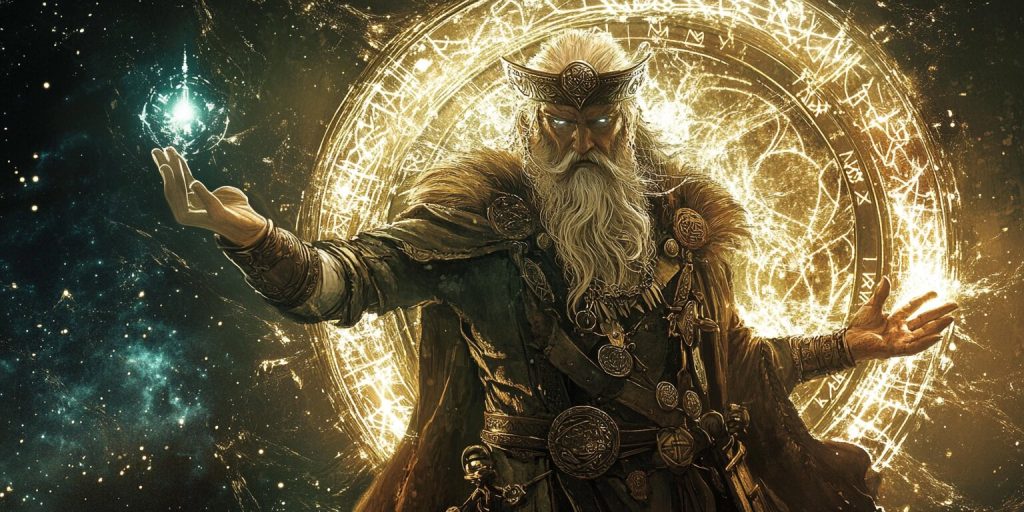Aesir Gods, Norse Cosmology, Norse Goddesses, Norse Gods, Norse Mythology, Odin, Ragnarok, The Nine Worlds, The Norns, Yggdrasil (World Tree)
Unveiling the Norse God of Time: Mysteries of Time and Fate in Norse Mythology
Norse mythology contains stories about gods, giants, elves, and big events. It’s all about time and fate, and these ideas shaped the lives of gods and humans in the old Norse world.
The Norse god of time is a mystery in this world of stories. This god is not as well-known as others. It’s like time itself, always there but hard to see.
In Norse stories, fate is everywhere. It connects gods and goddesses to their roles. This mix of time and destiny is key to understanding the Norse world. It’s a place where the past, present, and future are all mixed up. Keep reading this fascinating article to discover who is the god of time in Norse mythology.
Introduction to Norse Mythology and the Concept of Time
Norse mythology is filled with stories of gods, cosmic forces, and valkyries. It centers on the idea of time, which shapes the fate of gods and humans. The Norse cosmos is a complex place where time and fate are deeply connected.
Time in Norse Cosmology
Time is very important in Norse beliefs. It flows through Yggdrasil, the world tree that connects nine realms. This tree represents past, present, and future, guiding time through the universe.
Norse Gods and Their Roles
The Norse gods are divided into two groups: the Æsir and Vanir. They control different parts of life, like war and love. Odin, the All-Father, is key, connected to knowledge and the runic alphabet. Thor, Freya, and Loki also play important roles in the cosmic order.
Time and Fate in Norse Beliefs
Norse mythology closely links time and fate. The Norns, three powerful women, shape the fate of all beings. Their actions show how time and destiny are connected in the Norse view. This connection highlights the cycle of life and death, leading to Ragnarök, the end and rebirth of the world, as foretold by the Norns, including Verdandi.
The Norse God of Time: An Elusive Deity
The identity of the Norse god of time is still a mystery. Unlike Greek mythology with its known Chronos, Norse myths don’t have a clear time god. This has puzzled scholars and fans, leading to many theories about who might have been in charge of time.
In Norse mythology, time is tied to fate, making it hard to find a single time god. Some think Odin, the Allfather, might be linked to time because of his wisdom. Others believe the Norns, who weave destiny, could be time deities.
The lack of a specific time god in Norse myths is not found in primary sources. This is different from other mythologies, where time gods are key. The mystery of the Norse time god has started debates among historians and mythologists. Each has its take on the texts and artifacts.
Even though we’re still looking for a Norse equivalent to Chronos, it’s important to remember how Norse mythology views time. Their cyclical view of time, focused on Ragnarök and rebirth, might explain why a dedicated time god is hard to find in their stories.
The Norns: Weavers of Fate and Time
In Norse mythology, the Norns are powerful fate goddesses who shape the destinies of gods and humans. The three sisters, Urðr, Verðandi, and Skuld, represent the past, present, and future.
Their influence is vast, making them key figures in Norse cosmology.

The Three Sisters of Fate
Urðr is the past, verðandi is the present, and skuld is the future. They weave the fate of all beings together. Their work never stops as they spin Destiny’s threads at Yggdrasil’s base.
The Well of Urd
The Norns live near the well urðarbrunnr, or the Well of Urd, which is crucial for understanding fate in Nordic mythology. This sacred spring feeds Yggdrasil and offers wisdom.
The Norns use this water to care for the world’s tree. This keeps it growing and alive.
Influencing Fate
The Norns’ power reaches gods and humans alike. They decide life lengths and major events; even the mighty Norse gods must follow their decrees.
This shows fate’s great importance in Norse belief. It deeply influenced Norse culture and views on life and death.
Odin’s Connection to Time and Fate
Odin is the king of the gods in Norse mythology. He is important for time and fate and is often associated with the wisdom of Njord. As the god of war and poetry, Odin’s power goes beyond battle.
In Norse myths, he plays a major role in understanding time. His wisdom and foresight are key to understanding time.
Odin lost an eye on Mimir’s well to gain knowledge. This shows his deep link to the past, present, and future. In Norse myths, Odin is closely tied to time and fate.
Odin’s hall, Valhalla, is a place between life and death. It’s where he prepares warriors for Ragnarok, the final battle. This battle ends and starts time again. Odin is at the heart of this cycle.

- Odin’s ravens, Huginn and Muninn, represent thought and memory
- He consults the Norns, weavers of fate, for glimpses of the future
- Odin’s role as the god of poetry connects him to the preservation of history and time through oral tradition and the tales of valkyries.
In Norse myths, Odin shows the complex link between time, fate, and divine will. His quest for wisdom and readiness for the future show time’s role in destiny, which is true for both gods and humans.
Yggdrasil: The World Tree and Its Temporal Symbolism
In Norse mythology, Yggdrasil is a huge ash tree that connects the nine worlds. It acts as the cosmic axis, linking the realms of gods, giants, and mortals. Its roots go deep into Niflheim, and its branches reach the sky.
The Nine Worlds and Their Relationship to Time
The nine worlds linked by Yggdrasil show different parts of existence. From icy Niflheim to fiery Muspelheim, they represent various times. Midgard, where humans live, is the present in the big picture of time.
Yggdrasil as a Representation of Past, Present, and Future
The world tree is a symbol of time. Its roots reach into the past, getting wisdom from the Well of Urd. The trunk is present, strong, and growing. The branches look to the future, opening up new paths.
The Role of Yggdrasil in Norse Cosmology
Yggdrasil is key to keeping the universe in order. It’s where the Norns weave the fates of gods and humans. Despite challenges like the dragon Nidhogg and the goat Heidrun, Yggdrasil stays strong. It shows the power of time and the universe.
Ragnarök: The Cyclical Nature of Time in Norse Mythology
Ragnarök is a key idea in Norse mythology. It shows the end of the world and the gods’ fate. This event highlights the cycle of time in Norse beliefs.
Norse mythology doesn’t see time as a straight line. Instead, it believes in a creation, destruction, and rebirth cycle.
The prophecy of Ragnarök talks about disasters and battles that destroy the world. Gods face their fates, fighting against monsters and cosmic forces. Odin, Thor, and others die, playing their parts in this story.
But Ragnarök isn’t the end. After the world is destroyed, a new cycle starts. A few gods and humans survive, ready to start anew. This shows the Norse view of life as an endless cycle of death and rebirth.
- Ragnarök symbolizes the inevitable fate of gods and mortals, marking a significant event in Nordic lore.
- Natural disasters and battles mark the world’s end
- A new world emerges from the ashes of the old
Ragnarök offers a special view of time and fate. It shows that gods are also bound by fate yet offer hope for renewal. This cycle is like the seasons, showing how everything is connected in Norse beliefs.
Norse God of Time: Perspectives from Ancient Sources
Ancient Norse texts, including the poetic edda, prose edda, and skaldic poetry, give us a peek into their views on time. Each offers a unique look at how they saw time and fate.
References in the Poetic Edda
The poetic edda is a collection of Old Norse poems. It’s full of info on time in Norse mythology. The Völuspá poem talks about the world’s creation and end.
It also mentions the Norns, who shape destinies. This hints at their link to time.
Accounts from the Prose Edda
Snorri Sturluson’s prose edda provides more details on Norse myths, including tales of dwarfs and their craftsmanship. He also discusses Yggdrasil, the World Tree, which stands for the past, present, and future.
Sturluson also explains the roles of gods in time and fate. This adds depth to our understanding.
Interpretations from Skaldic Poetry
Skaldic poetry is known for its complex metaphors. It offers more views on time in Norse culture. These poems use detailed time imagery, showing time’s importance in Norse thought.
Although they don’t mention a god of time, they give us valuable insights into how the Norse saw time.
Comparisons with Other Mythological Time Deities
Norse mythology shares interesting similarities with other ancient beliefs about time and fate. Greek and Roman myths also deal with these topics in their ways. In Greek stories, the Moirai, or Fates, decide the destiny of gods and mortals.
This is similar to the Norns in Norse lore, who shape the fates of all beings. They play a big role in Norse myths.
Chronos, the Greek god of time, is different from the Norse view. Norse myths don’t have a single god of time. Instead, they see time as part of their world’s story, reflecting the cyclical nature of existence in Asgard.
The World Tree, Yggdrasil, is a key part of this. It connects the past, present, and future.

Germanic mythology, which is similar to Norse mythology, also discusses fate and time. The idea of wyrd, like Norse fate, is very important. It shows how Norse and Germanic beliefs, including those about Hel, are connected.
- Greek Moirai vs. Norse Norns: Both weave fate
- Chronos: Greek time deity, absent in Norse myths
- Germanic wyrd: Similar to the Norse concept of fate
Even though these myths are different, they all think about our connection to time and destiny. With its mix of fatalism and cosmic cycles, the Norse view gives us a special look at these big ideas.
The Impact of Time and Fate on Norse Culture and Society
The Vikings valued time and fate. These beliefs shaped their culture and daily lives. They recorded events using the runic alphabet, demonstrating their view of time’s power.
Norse sagas told stories of heroes and gods. These tales showed that fate was set. This idea made Vikings accept and be strong when things got tough.
The Vikings’ views also shaped how they met other cultures. They took their beliefs with them when they traveled and settled in new lands. This mixing of ideas created a new way of seeing time and fate, especially in Britain, influenced by Nordic traditions.
Iceland kept many Viking traditions alive. Its isolation helped keep these beliefs alive. Today, Icelandic stories and legends still show the old views on time and fate.
- Runic inscriptions often marked significant moments in time
- Sagas explored themes of fate and its impact on individuals
- Viking beliefs influenced other cultures through exploration and settlement
- Icelandic culture preserved many Norse concepts of time and fate
Conclusion
Norse mythology is full of stories about time and fate. Looking for a god of time leads us to many gods and forces. The Norns are key, weaving destiny for gods and humans.
Odin, the Allfather, is important in shaping time and fate, often aided by Frigg. His wisdom and sacrifices connect him to the universe. The world tree Yggdrasil shows the connection of past, present, and future.
Ragnarök shows time in Norse belief is a cycle. This cycle of end and rebirth shows fate and time are always changing yet constant. These ideas still inspire stories and thoughts today.
In Norse mythology, there isn’t just one god of time. Instead, we see a dance of fate, divine will, and balance. This view of time and destiny still fascinates us, linking ancient wisdom to our search for meaning.

